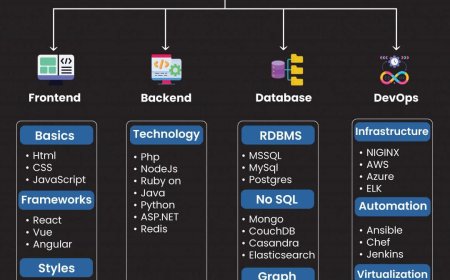How to visit the Bob Kerrey Pedestrian Bridge
How to Visit the Bob Kerrey Pedestrian Bridge The Bob Kerrey Pedestrian Bridge is more than just a crossing—it’s a symbol of connection, a landmark of regional pride, and a destination in its own right. Spanning the Missouri River between Omaha, Nebraska, and Council Bluffs, Iowa, this elegant cable-stayed structure offers breathtaking views, seamless pedestrian access, and a unique blend of engin
How to Visit the Bob Kerrey Pedestrian Bridge
The Bob Kerrey Pedestrian Bridge is more than just a crossing—it’s a symbol of connection, a landmark of regional pride, and a destination in its own right. Spanning the Missouri River between Omaha, Nebraska, and Council Bluffs, Iowa, this elegant cable-stayed structure offers breathtaking views, seamless pedestrian access, and a unique blend of engineering artistry and natural beauty. Whether you’re a local resident looking for a scenic stroll, a tourist exploring the Midwest, or a photographer chasing golden-hour light, visiting the Bob Kerrey Pedestrian Bridge is an experience that combines tranquility with awe. This guide provides a comprehensive, step-by-step walkthrough on how to visit the bridge, including practical logistics, best practices, essential tools, real visitor examples, and answers to frequently asked questions. By the end of this guide, you’ll have everything you need to plan a smooth, memorable, and enriching visit.
Step-by-Step Guide
Visiting the Bob Kerrey Pedestrian Bridge is straightforward, but preparation enhances the experience. Follow these detailed steps to ensure a seamless journey from planning to departure.
Step 1: Confirm Your Starting Location
The bridge connects two distinct cities: Omaha, Nebraska, on the west bank, and Council Bluffs, Iowa, on the east bank. Determine which side you’ll begin your visit. Most visitors choose Omaha due to its higher concentration of parking, dining, and public transit options. If you’re arriving by car, use GPS coordinates: 41.2580° N, 95.9975° W for the Omaha side, and 41.2581° N, 95.9835° W for the Council Bluffs side.
Public transit users can take the Omaha Transit (Metro) Route 11 or Route 12 to the “Old Market” or “Riverfront” stops, both within a 10-minute walk of the Omaha entrance. For those arriving by train, the Omaha Amtrak station is approximately 2.5 miles from the bridge, and rideshare services are readily available.
Step 2: Plan Your Visit Time
The bridge is open 24/7, but optimal visiting times vary based on your goals. For photography and quiet walks, arrive between 6:00 AM and 8:00 AM or 7:00 PM and 9:00 PM. These hours offer softer lighting, fewer crowds, and cooler temperatures. Sunset views from the bridge are particularly stunning, with the river reflecting hues of orange and purple behind the Omaha skyline.
Weekdays are generally less crowded than weekends. If you’re visiting during peak tourist season (May–September), avoid Saturday afternoons between 2:00 PM and 5:00 PM. For families with children or mobility concerns, mid-morning on a Tuesday or Wednesday offers the most comfortable conditions.
Step 3: Arrive at the Entrance
On the Omaha side, the entrance is located at the Riverfront Park complex, near the intersection of South 10th Street and Missouri Street. Look for the large, landscaped plaza with informational kiosks and bike racks. There is no toll, no ticket, and no reservation required—access is free and open to the public.
On the Council Bluffs side, the entrance is at the Missouri River Trailhead, adjacent to the Heartland of America Park. Parking is available in the free lot off 11th Street, and the path leads directly to the bridge ramp. Both sides feature ADA-compliant ramps and elevators for wheelchair and stroller access.
Step 4: Begin Your Walk Across the Bridge
Once you enter the bridge’s pedestrian pathway, you’ll immediately notice the gentle slope and wide, smooth pavement. The path is 1,740 feet long and approximately 20 feet wide, allowing ample space for walkers, runners, cyclists, and strollers to pass comfortably. The pathway is divided into two lanes: one for pedestrians and one for bicycles, clearly marked with painted lines and signage.
As you walk, pause at the mid-span viewing platforms. These are the best spots to take in panoramic views of the Missouri River, the Gene Leahy Mall, the Omaha skyline, and the Iowa bluffs. The bridge’s cable-stayed design creates dramatic shadows and light patterns, especially in the early morning or late afternoon.
There are no restrooms on the bridge itself, so plan accordingly. The nearest restrooms are located in Riverfront Park (Omaha) and Heartland of America Park (Council Bluffs), both within 200 feet of the entrances.
Step 5: Explore the Other Side
Upon reaching the opposite side, take time to explore the surrounding areas. On the Omaha side, walk south along the Missouri River Trail to the Joslyn Art Museum or north to the Durham Museum. On the Council Bluffs side, head east toward the Lewis and Clark Landing or visit the historic Union Pacific Railroad Depot.
Many visitors choose to make a loop: cross the bridge one way, then return the same route. Others prefer to use rideshare or public transit to return to their starting point, turning the bridge visit into part of a larger urban adventure.
Step 6: Capture Your Experience
Bring a camera or smartphone with a wide-angle lens. The bridge’s architecture, the river’s movement, and the contrasting skylines make for compelling compositions. Try shooting from the middle of the bridge looking toward downtown Omaha at dusk, or capture the bridge’s silhouette against a starry night sky. The bridge is well-lit after dark, making nighttime photography both safe and rewarding.
Don’t forget to tag your photos with location hashtags like
BobKerreyBridge, #OmahaRiverfront, or #CouncilBluffsWalk to connect with local communities and discover other visitors’ perspectives.
Step 7: Depart Safely
Before leaving, check your belongings. The pathways are well-maintained and secure, but it’s always wise to keep personal items close. If you’re returning by car, use the designated parking lots on your starting side. If you’re using public transit, check local schedules in advance—service frequency decreases after 7:00 PM.
For those who wish to extend their visit, nearby restaurants such as The Grey Plume (Omaha) or The Bistro on 12th (Council Bluffs) offer excellent dining options with river views. Many visitors combine their bridge walk with a coffee at the Riverfront Coffee House or a gelato from Gelato Fiasco on the Omaha side.
Best Practices
Visiting the Bob Kerrey Pedestrian Bridge is simple, but following best practices ensures safety, comfort, and respect for the environment and other visitors.
Wear Appropriate Footwear
While the bridge surface is smooth and even, the walk is long enough to warrant comfortable, supportive shoes. Sandals are acceptable in warm weather, but closed-toe shoes are recommended for cooler months or if you plan to explore nearby trails afterward. Avoid high heels or unstable footwear, especially if you intend to stop frequently for photos.
Bring Water and Snacks
There are no food or beverage vendors on the bridge. While the surrounding parks have concessions, it’s wise to carry a reusable water bottle and a light snack, especially if you’re walking during hot summer months or with children. Hydration is key, even on mild days.
Respect Shared Space
The bridge is shared by pedestrians, cyclists, and occasionally, guided tour groups. Always yield to faster-moving cyclists by stepping to the side when possible. Use the designated bike lane, and if you’re cycling, ring a bell or politely announce “On your left” when passing. Keep noise levels low—this is a space for reflection, not loud gatherings.
Leave No Trace
Dispose of trash properly. Recycling bins are available at both ends of the bridge. Do not leave behind wrappers, bottles, or personal items. The surrounding environment is carefully maintained, and litter disrupts the natural beauty and wildlife habitat along the riverbank.
Check Weather Conditions
The bridge is exposed to wind and weather. On windy days, especially in spring and fall, it can feel significantly colder on the bridge than on land. Check the forecast before you go. In winter, the bridge may be lightly snow-covered, but it is plowed and treated regularly. Ice can form on the railings—avoid touching metal surfaces in freezing temperatures.
Bring a Map or Download an Offline App
Cell service can be inconsistent along the river corridor. Download Google Maps or the Omaha Riverfront Trail app in advance. These tools provide real-time location tracking, nearby points of interest, and emergency contacts if needed.
Be Mindful of Wildlife
The Missouri River is home to migratory birds, turtles, and occasionally, river otters. Observe from a distance. Do not feed animals, and keep pets on a leash. The bridge is a corridor for wildlife as much as it is for people.
Plan for Accessibility
The bridge is fully ADA-compliant with ramps, tactile paving, and elevators at both ends. Service animals are welcome. If you or someone in your group requires additional assistance, contact the Omaha Parks and Recreation Department or the Council Bluffs Parks Department in advance—they can provide mobility device rentals or guided tour options.
Photography Etiquette
If you’re using a tripod or professional equipment, avoid blocking pedestrian traffic. Use the viewing platforms during off-peak hours. Be respectful of others who may be taking photos—don’t crowd or rush. Many visitors come for quiet moments; preserve that atmosphere.
Group Visits
If you’re visiting with a large group (10+ people), notify local authorities or park staff. While no permit is required, advance notice helps ensure smooth access and prevents congestion. Schools and tour groups often schedule visits during weekday mornings for optimal conditions.
Tools and Resources
Planning a visit to the Bob Kerrey Pedestrian Bridge is easier with the right tools. Below are trusted, up-to-date resources to enhance your experience.
Official Websites
For accurate, authoritative information, consult these official sources:
- City of Omaha Parks and Recreation: www.omahaparks.org – Details on trail conditions, events, and maintenance schedules.
- Council Bluffs Parks and Recreation: www.councilbluffsia.gov/parks – Information on nearby attractions, parking, and seasonal programming.
- Missouri River Trail System: www.missouririvertrail.org – Interactive maps, trail history, and connecting routes.
Mobile Applications
Download these apps for real-time assistance:
- Omaha Riverfront Trail Map (iOS/Android): Offers GPS-enabled trail navigation, rest stop locations, and historical markers.
- AllTrails: Features user-submitted reviews, photos, and difficulty ratings for the bridge and surrounding paths.
- Google Maps: Use “Walking” mode to get precise directions from your current location to either bridge entrance. Enable offline maps for areas with spotty signal.
- Weather Underground: Provides hyperlocal forecasts for wind speed and temperature on the river, which can differ significantly from downtown readings.
Public Transit Tools
For those relying on public transportation:
- Omaha Metro Transit: www.omahametro.org – Real-time bus tracking, schedules, and fare information.
- Transit App (iOS/Android): Aggregates schedules from multiple regional transit providers, including services connecting Omaha and Council Bluffs.
Photography Resources
To capture the best images:
- PhotoPills: Use the “Sun and Moon” feature to plan your visit around golden hour or twilight. The app shows exactly when the sun will align with the bridge’s orientation.
- Light Tracer: Helps you visualize how light will fall on the bridge at different times of day.
- Instagram Explore Page: Search
BobKerreyBridge to see popular angles and times used by photographers.
Historical and Educational Materials
Learn more about the bridge’s significance:
- “The Bridge That Connected Two Cities” – A documentary by Nebraska Public Media, available on YouTube.
- Omaha Public Library Digital Archive: Contains historical photos of the Missouri River crossings and interviews with bridge designers.
- Bob Kerrey Pedestrian Bridge Visitor Kiosks: Located at both entrances, these interactive displays feature touchscreens with 3D models, construction timelines, and biographies of Senator Bob Kerrey.
Accessibility Resources
For visitors with disabilities:
- Nebraska Commission for the Blind and Visually Impaired: Offers audio descriptions of the bridge for visually impaired visitors upon request.
- Accessible Omaha: A nonprofit that provides free mobility device rentals and guided tours of accessible landmarks, including the bridge.
Real Examples
Real-world examples illustrate how diverse visitors experience the Bob Kerrey Pedestrian Bridge. These stories highlight the bridge’s role as a connector—not just geographically, but culturally and emotionally.
Example 1: The Family Outing
Anna, a mother of three from Lincoln, Nebraska, visited the bridge with her children during a weekend trip to Omaha. “We left the house at 8 a.m. with snacks, water, and a picnic blanket. The kids loved watching the boats pass under the bridge. We stopped at the middle platform and played ‘I Spy’ with the skyline. My 6-year-old asked if the cables were ‘spiderwebs for giants.’ We took a photo there and later printed it as a fridge magnet. It’s now our family’s favorite memory from our trip.”
Example 2: The Photographer’s Journey
David, a professional landscape photographer from Kansas City, came to the bridge during the autumn equinox. “I’d studied the bridge’s alignment for weeks. I knew the sun would set directly behind the downtown skyline at 7:14 p.m. I arrived at 5:30 with my tripod, neutral density filter, and drone. I captured 47 shots over two hours. One of them—where the bridge’s cables form perfect radial lines against a gradient sky—won first place in the 2023 Nebraska Photography Awards. The bridge isn’t just a structure; it’s a canvas.”
Example 3: The Commuter’s Ritual
Marisol, a nurse who works in Omaha but lives in Council Bluffs, walks the bridge every weekday morning. “I used to drive 20 minutes each way. Now I walk. It’s 25 minutes, but it’s my meditation time. I listen to podcasts, watch the river, and think about my day. Sometimes I wave to other walkers. We don’t know each other’s names, but we nod. It’s become my quiet sanctuary.”
Example 4: The Student Project
A group of civil engineering students from the University of Nebraska–Lincoln used the bridge as a case study for a structural analysis class. “We measured cable tension, calculated load distribution, and interviewed the maintenance crew,” said student Liam. “The bridge’s design is elegant in its simplicity. It’s a perfect example of how infrastructure can be both functional and beautiful. We presented our findings to the city council—they were impressed.”
Example 5: The Veteran’s Return
After serving overseas, veteran James returned to Omaha and began walking the bridge every Sunday. “I lost my brother in Iraq. He loved Omaha. He always said he wanted to walk across that bridge one day. I do it for him. I bring his dog tags and tie them to the railing. I don’t cry. I just stand there and feel the wind. It’s how I keep him close.”
FAQs
Is there a fee to walk across the Bob Kerrey Pedestrian Bridge?
No. The bridge is free and open to the public 24 hours a day, 7 days a week. There are no tolls, tickets, or reservations required.
Can I bike across the bridge?
Yes. The bridge has a dedicated, clearly marked bike lane. Cyclists are asked to yield to pedestrians and use a bell or verbal warning when passing. Bikes are also allowed on the sidewalks if the bike lane is crowded.
Are restrooms available on the bridge?
No. Restrooms are located in Riverfront Park on the Omaha side and Heartland of America Park on the Council Bluffs side, both within 200 feet of the bridge entrances.
Is the bridge accessible for wheelchairs and strollers?
Yes. The bridge is fully ADA-compliant with ramps, elevators, and tactile paving at both entrances. The pathway is wide, smooth, and free of obstacles.
Can I bring my dog?
Yes, dogs are welcome but must be kept on a leash no longer than six feet. Owners are responsible for cleaning up after their pets. Water stations for dogs are available near the Omaha entrance.
How long does it take to walk across the bridge?
The bridge is 1,740 feet long. At a normal walking pace, it takes approximately 5 to 7 minutes to cross. Allow extra time for stops, photos, or enjoying the views.
Is the bridge lit at night?
Yes. The bridge is illuminated with energy-efficient LED lighting that highlights its cable structure and creates a warm glow over the river. It is safe and popular for evening walks.
Are there guided tours available?
Yes. The Omaha History Center and local tour companies offer guided walking tours of the bridge and surrounding riverfront. These are typically offered on weekends during spring and summer. Check the Omaha Parks website for schedules.
Can I take a drone photo from the bridge?
Drone use is permitted from the bridge deck with prior approval from the City of Omaha’s Parks Department. Drone flights are prohibited within 500 feet of the bridge’s approach ramps due to safety regulations. Always check FAA guidelines and local ordinances before flying.
What’s the best time of year to visit?
Spring (April–June) and fall (September–October) offer the most pleasant temperatures and vibrant scenery. Summer is busy but offers long daylight hours. Winter can be cold and windy, but the snow-covered bridge and quiet river provide a serene, almost surreal atmosphere.
Is there parking near the bridge?
Yes. Free parking is available at Riverfront Park in Omaha and Heartland of America Park in Council Bluffs. Additional paid parking is available in nearby garages during events. Avoid parking on side streets near the entrances during peak hours.
Can I host a wedding or event on the bridge?
Small, private gatherings are permitted without a permit, as long as they don’t obstruct pedestrian traffic or require equipment like tents or stages. For larger events, commercial photography, or organized gatherings, contact the Omaha Parks and Recreation Department to apply for a special use permit.
Conclusion
The Bob Kerrey Pedestrian Bridge is more than a physical link between two cities—it’s a testament to human ingenuity, a canvas for personal reflection, and a gathering place for communities. Whether you’re crossing it for the first time or the fiftieth, each visit holds the potential for discovery. By following the steps outlined in this guide, you’ll not only navigate the bridge with ease but also appreciate its deeper significance: as a symbol of connection, resilience, and shared space.
Planning ahead, respecting the environment, and embracing the quiet moments will transform your visit from a simple walk into a meaningful experience. Use the tools and resources provided to enhance your journey, learn from the stories of others, and share your own. The bridge doesn’t just connect Omaha and Council Bluffs—it connects people to places, to memories, and to each other.
So lace up your shoes, bring your curiosity, and step onto the bridge. The river, the skyline, and the wind are waiting.





















